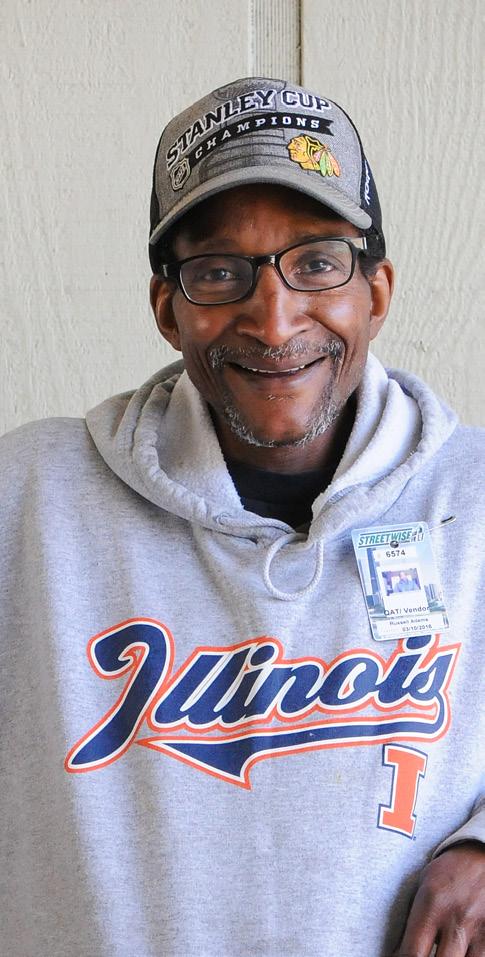
3 minute read
Baseball's Great Chicago American Giants
Vendors Russ Adams, John Hagan and Donald Morris chat about the world of sports with Executive Assistant Patrick Edwards.
Patrick: Some weeks back, a gentleman I will refer to as Sc (StreetWise customer) called the office and noted he didn’t want to tell us how to run our magazine, but it would behoove us to write about the Chicago American Giants, an originally-independent Black baseball team, that, eventually (in 1920), became a Negro Leagues’ team. To be honest, I’d never heard of the team; I’d heard of the Negro Leagues, but not the Giants. According to Sc, an 85-year-old white man from the North Side and a longtime StreetWise customer (Gwendolyn Freeman is his vendor), the Giants were THE best team in Chicago for a time. Initially, they played at South Side Park (West 38th place and South Princeton avenue) through 1940; 1941-1956, the team shared Comiskey Park with the White Sox (showcasing there when the Sox were traveling). Sc and his family would attend the games, and, every time, until he finally asked about it, he would curiously stare at the stands full of only white people in suits—no other obvious races in sight. The next day, he would wonder why the game was never reported in the main newspapers—only the Chicago Defender newspaper carried it. Unfortunately, instead of a true, all-out, separate-but-equal situation, disparities continued. It’s one thing to be civil in one’s own space, but if the one in power fights against a change, e.g., someone from the less-powerful faction wants the opportunity to play in the “power” league, then that’s a problem. When Major League Baseball (MLB) began opening its doors to those of all races— especially Blacks—there was a struggle on all sides. From the Negro Leagues’ side, specifically in the case of the American Giants, the owner instructed the team to sign white players in order to keep the Black players on the team from defecting to the Majors. The Chicago American Giants' last year as an organization was 1956. 1947 was the year that Jackie Robinson officially broke the major league color line. He signed the contract in 1945 and, officially, joined the Los Angeles Dodgers in 1947. So, the Dodgers were the first; the Boston Red Sox last in 1957. Today, we celebrate the improvement over the past seven decades, but there is still much-needed change in regard to Major League Baseball's racial breakdown on front-office positions, including managerial and coaching spots.
Patrick: I can’t help but to think back to those Black players who, though they enjoyed success in the Negro Leagues and elsewhere, were denied the opportunity to play in the majors. While I’m buoyed by the fact that diversity is becoming more naturally-attained, that the physical breakdown of the racist wall wasn’t that long ago is still troubling.
John: Well, I have to agree that it is troubling that it really wasn’t that long ago when Robinson broke the barrier. When he did break the color line, it was a watershed moment not only in baseball, but in all of sports. That he was able to disprove the notion with his talent, plus the gelling of Black and white teammates, shows us that, overall, sports is a unifying tool.
Donald: Mr. Jackie Robinson was chosen to be the one because of not only his physical talents, but also because he was believed capable of enduring the hate that would be hurled at him. To this day, Robinson continues to work hard for Black empowerment.
Russ: Here’s to you, Jackie Robinson, for helping to lead us into a new phase.
Any comments or suggestions? Email pedwards@streetwise.org








